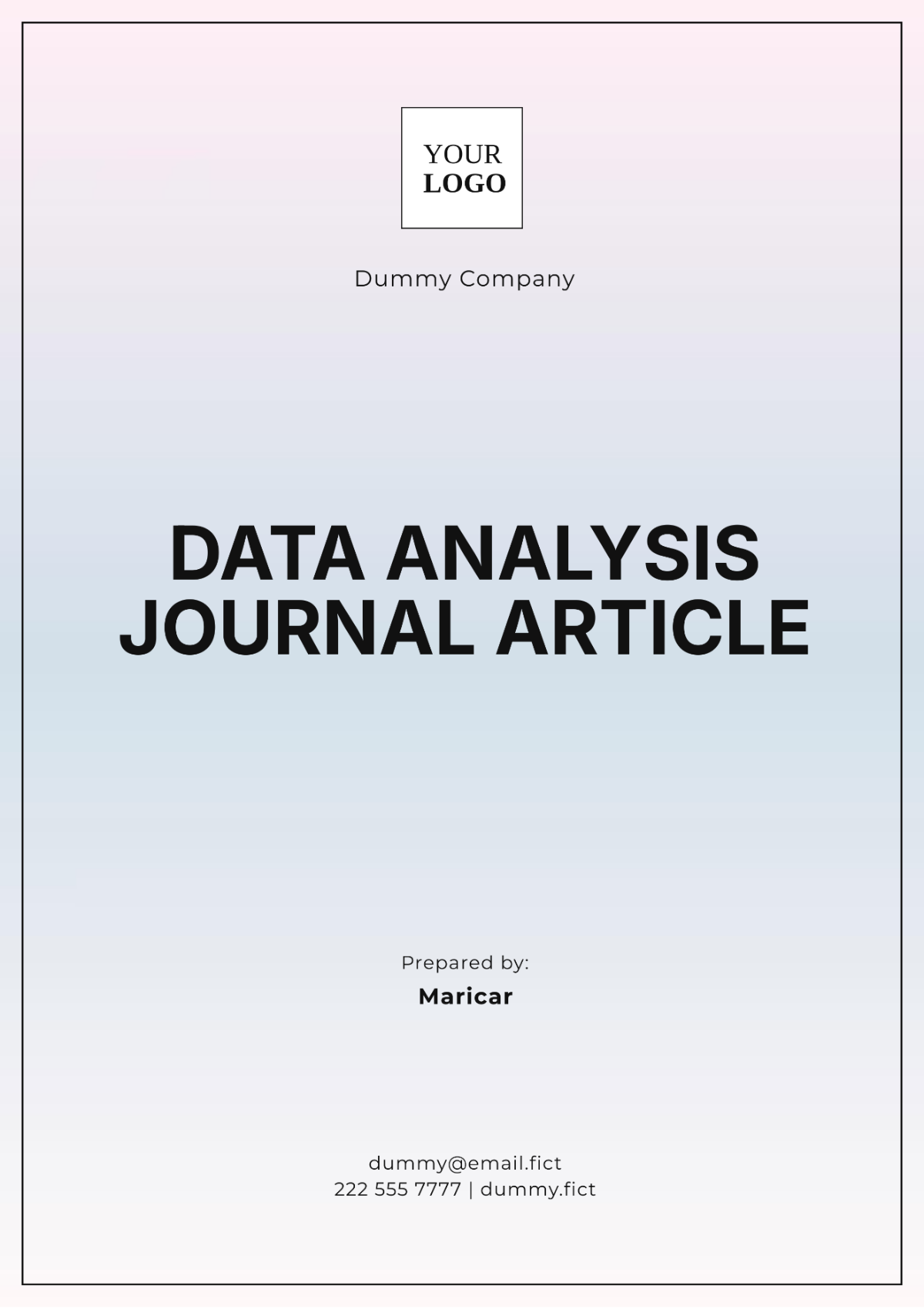Restaurant Performance Analysis
I. Introduction
Welcome to the Restaurant Performance Analysis by [Your Company Name]. This analysis delves deep into various measurable metrics to provide a thorough review of our restaurant's performance. Our primary objective is to gain insights into the factors influencing customer satisfaction, revenue generation, and operational efficiency. By dissecting different aspects of our restaurant, including menu offerings, staff service quality, and ambiance, we aim to pinpoint areas with potential for enhancement.
In this analysis, we will explore trends in consumer behavior and their impact on sales, enabling us to make strategic decisions aimed at boosting the overall success of [Your Company Name]. By understanding these elements, we can align our efforts to meet and exceed customer expectations while maximizing operational efficiency. Let's embark on this journey to optimize our performance and ensure a remarkable dining experience for our patrons.
II. Methodology
The analysis conducted by [Your Company Name] followed a robust methodology, meticulously gathering data from multiple sources, including customer feedback forms, sales reports, and online reviews. This comprehensive approach ensured a rich dataset encompassing various facets of restaurant performance. Advanced analytical tools were then deployed to process this data, focusing on key metrics such as customer visit frequency, average spend per customer, and staff performance ratings.
Data Collection: Gathering information from customer feedback forms, sales reports, and online reviews.
Data Processing: Employing advanced analytical tools to analyze metrics relevant to customer satisfaction, revenue generation, and operational efficiency.
Statistical Analysis: Utilizing statistical methods to derive meaningful insights from the collected data.
Data Visualization: Presenting findings through data visualization techniques for enhanced clarity and understanding.
Comparative Analysis: Benchmarking the restaurant's performance against industry standards to provide an objective assessment of its competitive standing.
III. Key Findings
Through meticulous analysis, [Your Company Name] has identified key insights into various aspects of restaurant performance. The following findings shed light on critical areas such as customer satisfaction, revenue trends, and operational efficiency, providing valuable insights for strategic decision-making.
A. Customer Satisfaction
85% positive rating on service efficiency
Most complaints related to seating availability during peak hours
High praise for diverse menu options and food quality
B. Revenue Trends
Incremental revenue growth of 5% quarter-over-quarter
Lunch hours constitute 60% of daily revenue
Special weekend offers boosted sales by 15%
C. Operational Efficiency
Kitchen workflow optimization reduced meal preparation time by 20%
Introduction of digital ordering decreased order errors
IV. Insights from the Data
The analysis of key metrics provides valuable insights into [Your Company Name]'s performance, offering a clear understanding of critical factors influencing customer satisfaction, revenue generation, and employee performance.
Metric | Value |
|---|---|
Customer Satisfaction Index | 82% |
Average Daily Revenue | $5,000 |
Employee Performance Rating | 4.5/5 |
V. Actionable Recommendations
Based on the analysis conducted by [Your Company Name], the following actionable recommendations have been identified to address areas of improvement and capitalize on opportunities for enhancing restaurant performance.
Expand Dining Space or Introduce a Booking System: To effectively manage peak hour traffic and accommodate the increasing demand during busy periods, consider expanding our dining space or implementing a booking system. This will help streamline operations, reduce waiting times, and improve overall customer satisfaction.
Enhance Staff Training Programs: Invest in comprehensive staff training programs to ensure that our team maintains consistently high service standards. By providing ongoing training and support, we can empower our staff to deliver exceptional customer experiences, resulting in increased loyalty and positive word-of-mouth referrals.
Implement Loyalty Programs: Introduce loyalty programs to incentivize regular customer visits and increase repeat business. By rewarding loyal patrons with exclusive discounts, promotions, or rewards, we can encourage them to choose our restaurant over competitors and contribute to a steady revenue stream.
Boost Marketing Efforts for Weekend Specials: Increase marketing efforts to promote our weekend specials and maximize profit during these peak periods. Utilize targeted advertising, social media campaigns, and email marketing to create buzz around our weekend offerings and attract more diners.
Explore Cost-Effective Ingredient Sourcing: Evaluate our ingredient sourcing strategies to identify opportunities for cost savings without compromising on quality. By exploring alternative suppliers, negotiating better prices, and optimizing our menu offerings, we can improve profit margins while maintaining the integrity of our dishes.
VI. Conclusion
In conclusion, the reviewed data illustrates a generally positive trend in the restaurant's performance, with strong customer satisfaction and steadily growing revenue. Noteworthy are the high ratings for food quality and service efficiency which highlight core strengths. However, issues such as insufficient seating during peak hours need to be addressed. By implementing the above recommendations, the restaurant can further enhance its operational efficiency, customer experience, and profitability. Continued monitoring and analysis will be essential to adapting strategies in line with evolving market dynamics and customer preferences.

















































